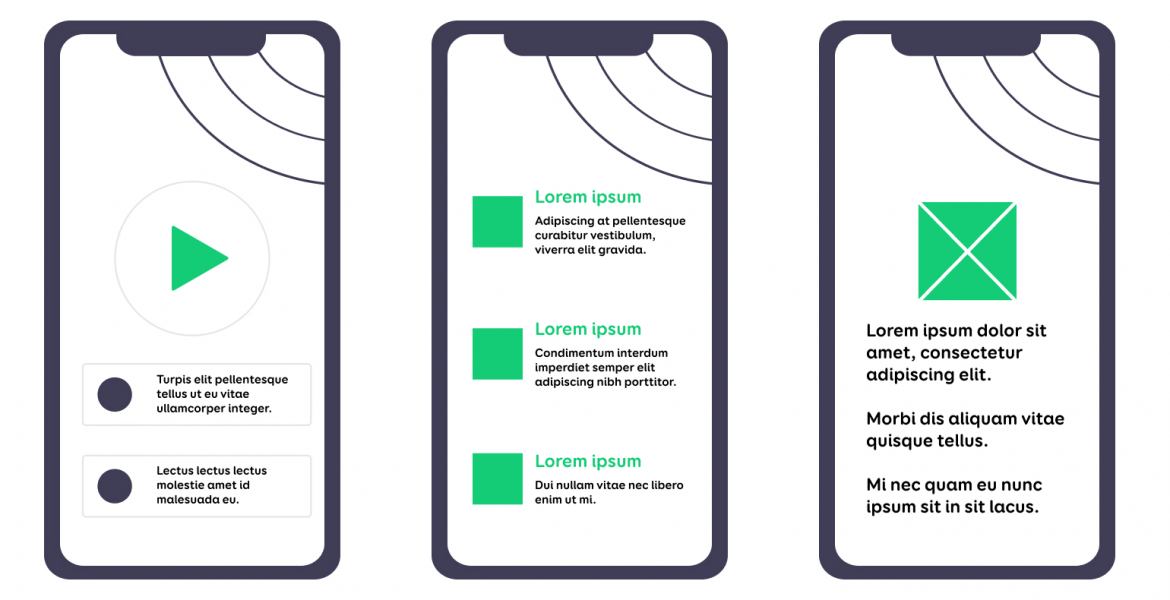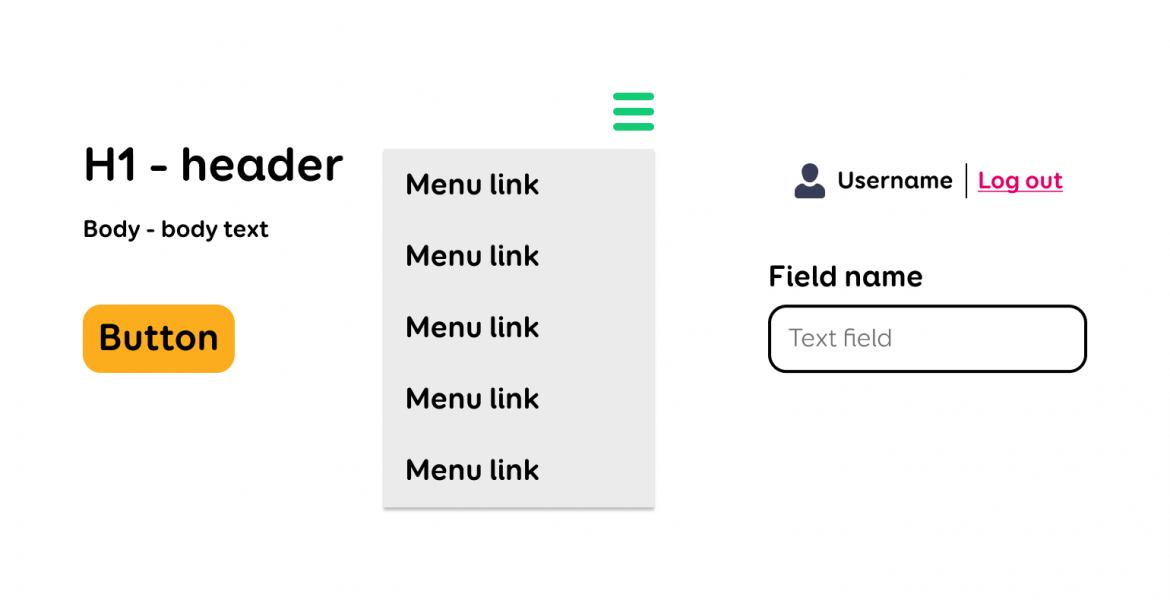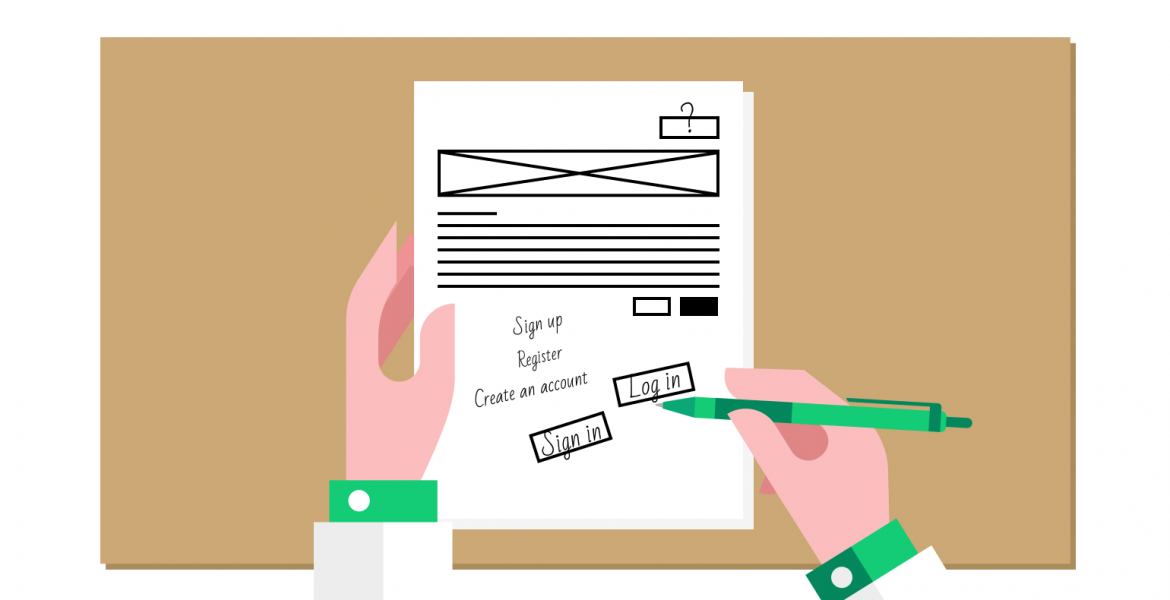Interviews with WUD Estonia 2020 speakers: Jane Ruffino’s recommendations for UX writing, part 1
Jane Ruffino is a content designer, UX writer, strategist, and researcher, who is passionate about words and how they affect people. At the World Usability Day Estonia 2020 conference, she gave a talk about integrating UX writing into your work and a related workshop. In this interview, we delve a bit further into this somewhat unknown industry to explore and explain the world of UX writing in greater detail.
For those who missed your talk at the conference, could you briefly sum up what UX writing actually is?
UX writing is the process of designing with language, usually in some kind of interface. It’s designing the language component of a design, a product, or a service. That includes the output – things like buttons, headings, error messages –, but the work is like that done for any other design.
A lot of standardised buttons are used across UIs, but even those sometimes get pushed outside regular boundaries and that includes the words used on those buttons. When is a UX writer actually required for tasks like this?
That’s similar to asking when do you need someone to design your button. Whether your button is rounded or squared, it’s actually about making those choices, keeping things consistent and aligned with user and brand needs.
" In most situations, there’s a fixed set of language choices you can make, but you need someone to help you pick one based on solid reasoning. That’s why it’s a design job rather than just sticking the words on an element."
And buttons are one thing, but this expands to questions like describing and naming things, writing headers, doing the onboarding, or deciding what should be a header and what should be text. Buttons are just one tiny part of it, but it’s an example we use a lot. It’s perhaps not the best example, but it’s the most obvious one.
Buttons are also a deceptive example. You can’t just call someone and ask them what to put on the button at the end of the process. Even choices as simple as “log in” versus “sign in” or “sign up” versus “join” have a lot of questions attached to them: what are the buttons actually doing, what is the service, how do you envision it, what is the user’s mental model, where are they in the flow, how much do they know?
And on top of all that, we also have to keep in mind what’s going on around the button: does the user know what they‘re pushing and where they will go after tapping on the button? Do they understand the consequences of the action? Is it a modal or a screen? Do they have to interact with the button, or can they opt out of tapping on it?
What’s written on the button is one aspect, but it’s related to what the person is doing. And while it's 'writing' because words are the output, it's just as much part of design and strategy as the rest of UX and UI.
And how important is it to have a separate UX writer on a team or project? Could the other members of the team do the writing instead?
In an ideal world, it would always be great to have one on the team, but it really depends on what you’re trying to achieve and the skills the team has. The same question could be asked about UX researchers and the answer is similar in that ideally, you would have one person dedicated to only research. But that’s not always possible, so you must prioritise.
You must ask yourself how much a UX writer could add to the project, which is a difficult question to answer, because people are often resistant to having writers on their team. Or they could overestimate their need for a writer because they don’t want to do the words.
"You have to honestly estimate whether a UX writer is needed. If you’re leaning towards doing their work yourself, then figure out if you have the expertise on your team to make decisions around language."
Remember that not having a UX writer means you have to think about language even more. For example, if you’re creating a product in a language that no one on the team speaks fluently, then you’re obviously going to need to involve someone who speaks that language.
If a project has both a UX and UI designer, which one of them should be responsible for UX writing? Why?
Comparing it with research is useful here as well. It needs to be a shared task, even if the split is 80-20. Both roles need to be involved. If the team had a separate UX writer, they would still need to interact with both the UX and UI designer. It comes down to what the service or product is.
There’s no fixed way to do this, you just have to sit down together and think it through. It could be that one person thinks about the words more because it’s related to the task they’re working on, or they could simply be more interested in it.
If someone wanted to become a better UX writer or wanted to know how to get into the field, where would you recommend they start?
"It depends on what career the person is coming from. A lot of backgrounds and skillsets suit UX writing very well. Most of us became UX writers accidentally. It suited our existing skills and we only needed to fill in the gaps by figuring out what was needed in a particular project."
Many people in the field come from journalism, which is a great background to have because it means you’re good at research, understand constraints and structure, and know how to use someone else’s voice. Much of the UX process is very similar to the editorial process.
Then there are people who come from marketing and understand people, positioning, and the relationship between a message and people – that it only works if they understand it.
We also have people from education, from learning design and teaching, which is basically UX design and so, a great starting point. There are also people who come from creative writing. For example, I think poets make great UX writers because they really understand the efficiency of language and what words do, not just what they say.
There were no courses available when I started working as a UX writer. To get started in UX writing, you first need to ask yourself which of your skills fit with it and then you can fill in the gaps.
Today, there are a range of courses out there, at different paces, price points, and levels of intensity. For example, I’ve put together a very intensive 12-week UX writing course on the subject. And of course, there’s also relevant literature that you can read.
Getting into UX writing is about transitioning and I think that in order to do a good job at it, you need to bring something else to the table as well. Some kind of other background really helps you, which is why it’s great for career changers at any stage.
Think about your mindset as well. For example, I really love the research process, so I love being on a team where no one else wants to do the research, because then I get to do it. Figure out what other skills you could bring to the team.
And think about your goal – are you maybe a designer or product manager trying to do the writing in your current team, or are you trying to transition into a new career and apply for a role that has UX writer in the title. These are different processes.
Just try to do it. Pick a project, such as redesigning an interface. If you have no design skills, get a UI kit from the Figma community and start figuring out how to build a flow. Another good tool is the daily UX writing challenge by Ryan Farrell, where you get a challenge every day for two weeks that you can use for small UX writing projects.
"If you don't have a design background, just use whatever you're comfortable with. Paper and pen is fine! I think this fear of design tools is a blocker for a lot of people who want to get started.
They think they need to know how to use Figma or other designer tools. You'll eventually need some of these tools when you work with other people, and it can't hurt to play around with them, but don't let tools scare you off before you've even started."
What kind of aforementioned relevant literature would you recommend to those interested in UX writing?
In order to get started, you need to know about content strategy. I’d recommend Kristina Halvorson’s and Melissa Rach’s “Content Strategy for the Web”, which is a classic. From more recent books, I’d recommend Michael Metts’s and Andy Welfle’s “Writing Is Designing: Words and the User Experience”, a really nice book about the mindset of doing the writing, and Torrey Podmajersky’s “Strategic Writing for UX: Drive Engagement, Conversion, and Retention with Every Word”, which is like a manual of getting the work done.
With that foundation, you can figure out what you still need to know to do this job. But I also really recommend Leah Buley’s “The User Experience Team of One: A Research and Design Survival Guide”, because a lot of what we do as UX writers is about being a UX team of one but from a writing perspective.
What do you think of the ever-popular Lorem Ipsum?
It doesn’t do anything. I wish I could agree with people who think it has a place, but I don’t. When you’re creating an interface, then not only do you need to play with real text as soon as possible, but you may need to do it in more than one language. You have to test all the languages immediately, because your original UI design needs to reflect that. Keep in mind that some languages are going to be longer and break every UI.
Use real words, even if it’s placeholder text, because you need to give people a sense of what interacting with the product would feel like and figure out how much space and whitespace you need, or how many screens are needed for a text. You can even use bad placeholder text and have it say something like “On this page, we’re going to tell users that they’ll have to email us to delete their account.“

How to find a balance in projects where the client wants to be involved with creating the copy, for example, by wanting to include complicated terminology that you can already see might not work well from a UX perspective?
A lot of times, you need to find out the reason for the client’s wish. Then, if possible, you need to defer to the user to test whether users can actually understand the copy or not. If you have a design system that covers that particular element and its styling, then you can also point to that.
Of course, you also need to ensure that the writing doesn’t go off brand. As with any UX designer, your job is to balance business and user needs and pushing the client away completely isn’t a good idea.
"Try to be their ally. And if you do have to implement an idea that is clearly not great, then first explain the consequences of doing that. But in general, think about what the person from the client side is an expert in.
It could be something helpful for you even if you don't implement their idea directly. Most people on the client side have some knowledge or insight that's helpful for you. It's just important not to confuse what the client thinks users want with what users actually need."
Please name your three main tips for better UX writing.
Let it take time. There are no shortcuts and the more foundational work you do at the outset, the faster you’ll be able to do the work in the process. Figure out how you’re going to talk to users, make sure everybody understands who they are and what their mental models are. If you do that, then making decisions around individual words will be faster and easier to test, because it'll be based on solid reasoning.
If you have a writer on your team, let them be influential. This is a big problem on a lot of teams where people want the writer to have a huge impact but won’t let them have influence. Remember that impact has everything to do with influence. Make room for the writer, listen to them.
If you're a non-writer doing the writing yourself, keep it simple but test things as soon as possible. Don’t write based on your opinion, write from what works. Learn how to seek the feedback you need to make the content better. Do as good a job as you can, test it, and then go back and do a better job based on what people said. You need to know language, but you don’t have to be a professional writer to work with language, if you're good at listening.
We hope you found this interview with Jane Ruffino interesting and that it provided you with useful tips to further improve your UX writing skills. The second part of our interview with Jane will be published on our blog next week – so get ready for even more inspiration coming your way! :)









